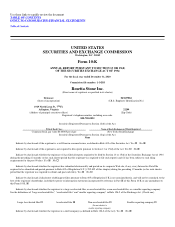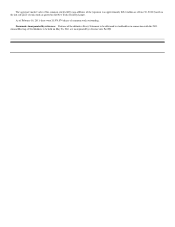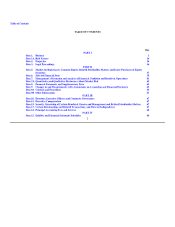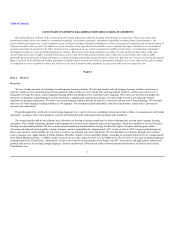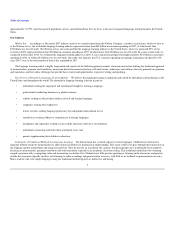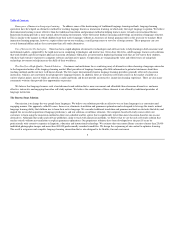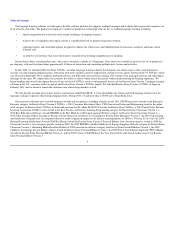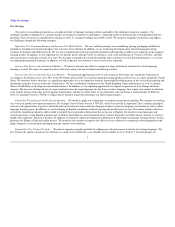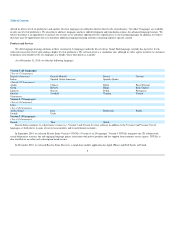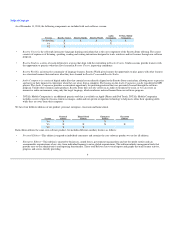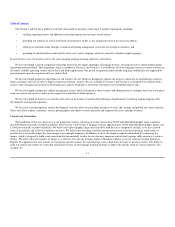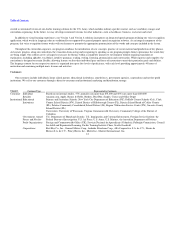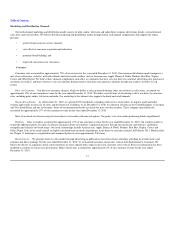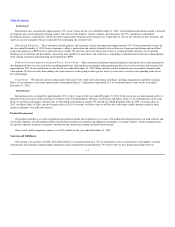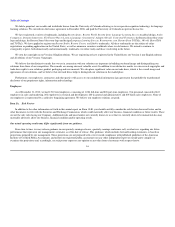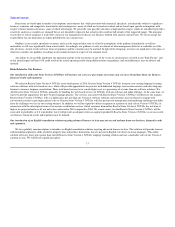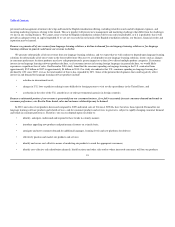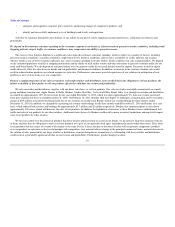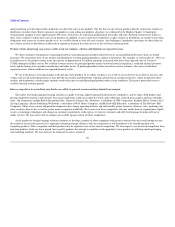Rosetta Stone 2010 Annual Report Download - page 12
Download and view the complete annual report
Please find page 12 of the 2010 Rosetta Stone annual report below. You can navigate through the pages in the report by either clicking on the pages listed below, or by using the keyword search tool below to find specific information within the annual report.
Table of Contents
organizations with key information they need to measure return on their language learning investment.
Classroom Edition—This edition is targeted to language programs in primary, secondary and higher education settings and is scalable to
accommodate a variety of implementations, from individual schools to district-wide programs and universities. The classroom edition is designed
to be incorporated into a teacher's overall language-learning curriculum, complementing in-class teaching and enabling individualized self-paced
learning outside the classroom. The classroom edition includes a learner management tool, the Rosetta Stone Manager, which provides easy-to-
use administrative and reporting functionality. This tool enables teachers to plan lessons and generate reports and graphs that track student and
classroom activity, progress and scores.
Home School Edition—This edition is targeted to families with home school students and is designed to provide parents the tools and resources
they need to manage student progress without extensive planning or supervision. The home school edition includes administrative tools that
permit parents to follow student progress and access specific information about student performance, such as completed exercises, test scores,
and time spent learning, and to generate printable progress reports. In addition, parents have the ability to enroll their students in predefined
curriculum paths designed to assist in lesson planning and in achieving learning objectives.
Our solutions are available both pre-packaged and by subscription online through our language learning portal. For the year ended December 31, 2010,
approximately 83% of our revenue was from CD-ROM sales to both consumers and institutions, while approximately 17% was from online subscriptions.
We also provide an online peer-to-peer practice environment called SharedTalk, at www.sharedtalk.com, where registered language learners meet for
language exchange and to practice their foreign language skills. During 2010, we had more than 135,000 active SharedTalk users.
In addition, we have developed Rosetta Stone products for the exclusive use of Native American communities to help to save their endangered
languages, including Mohawk, Chitimacha, Inuktitut and Iñupiaq. In 2010, we continued our work with Native American communities by adding a product
for Navajo.
Technology
We develop most of our own technology, including our proprietary unified language learning software platform. Our newest application, Version 4,
currently supports up to five levels of proficiency and is available in 24 languages. Version 3 currently supports up to five levels of proficiency and is
available in 31 languages. Version 2, our legacy application, is available for our other 3 languages. We intend to offer additional languages. The technology
underlying Version 2, Version 3 and Version 4 is designed to handle the complexities of a wide variety of languages, including languages written from right-
to-left such as Arabic and Hebrew and languages with characters such as Chinese and Japanese.
10
•
•


